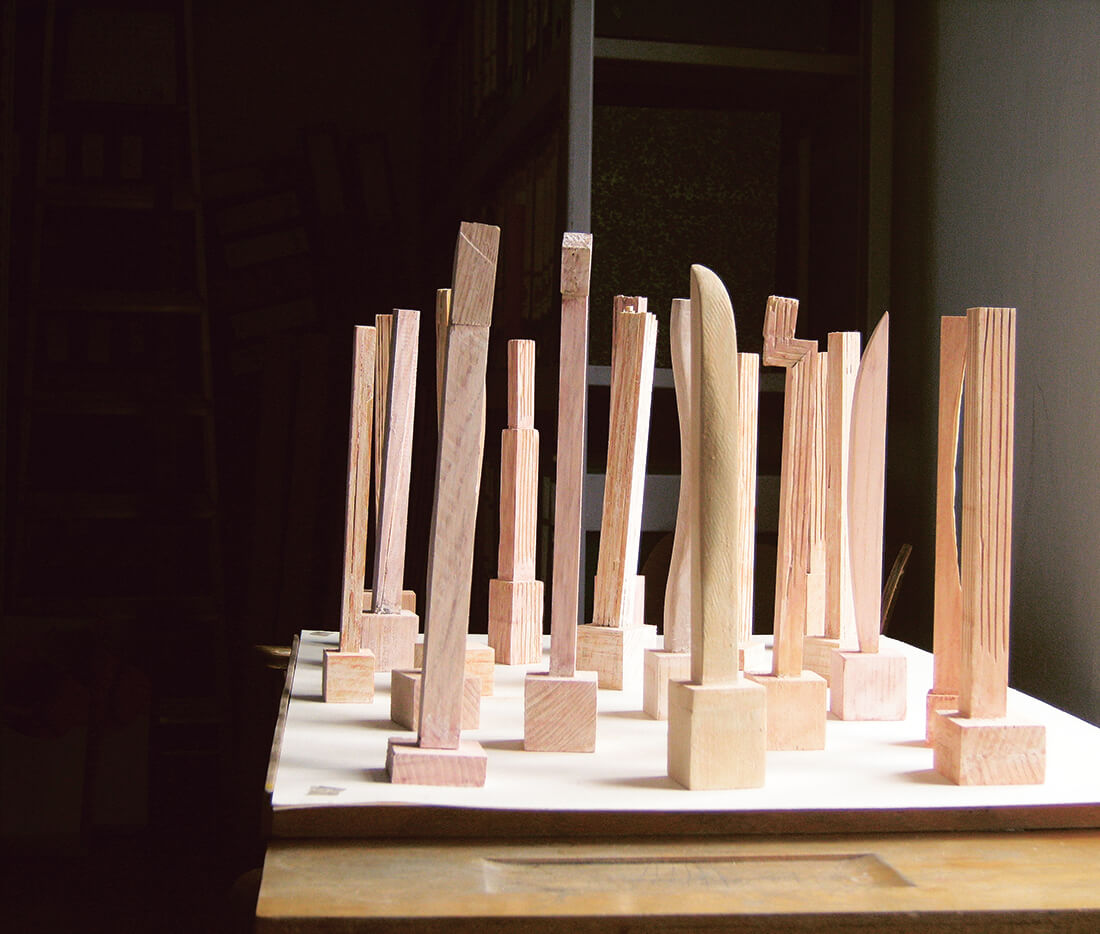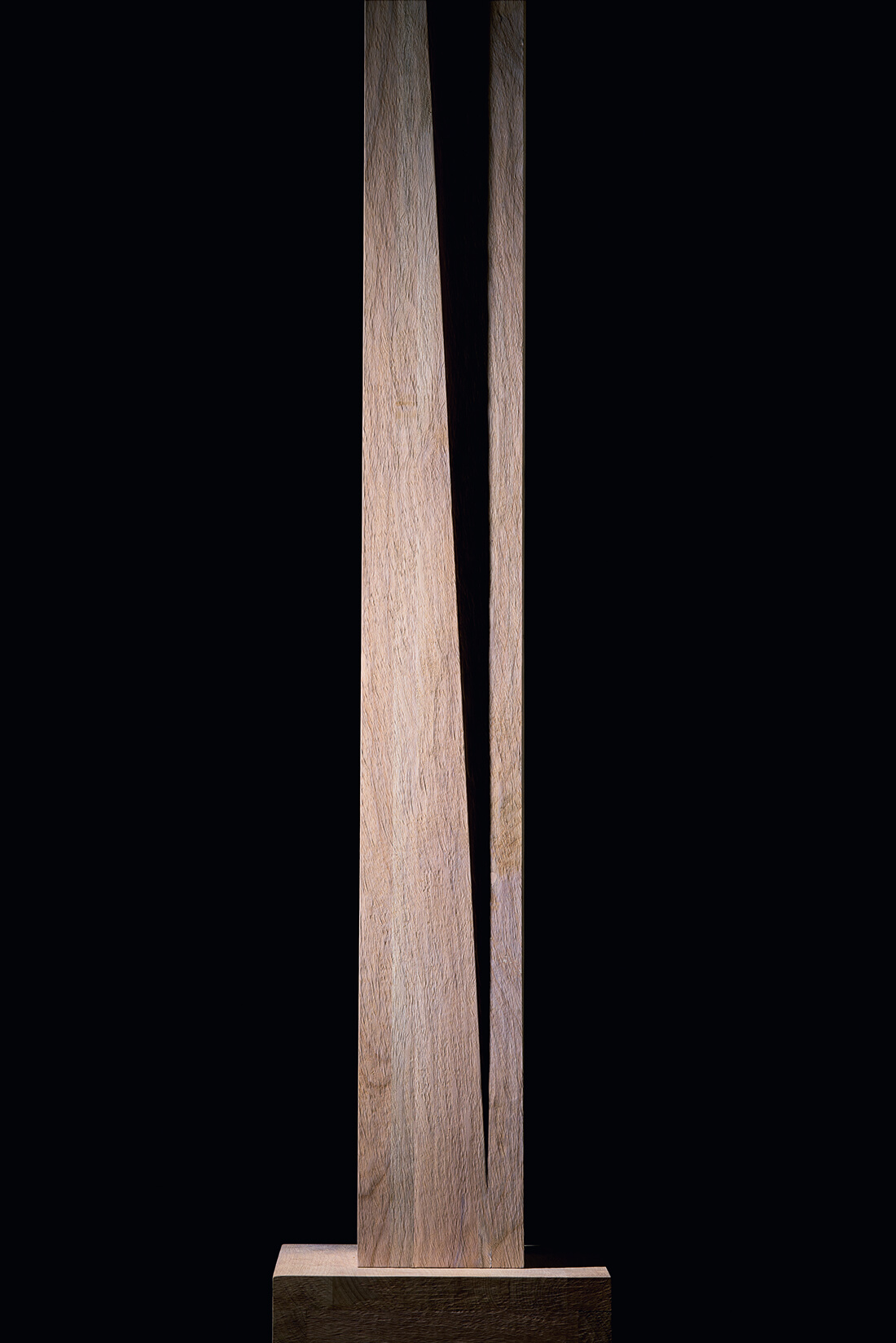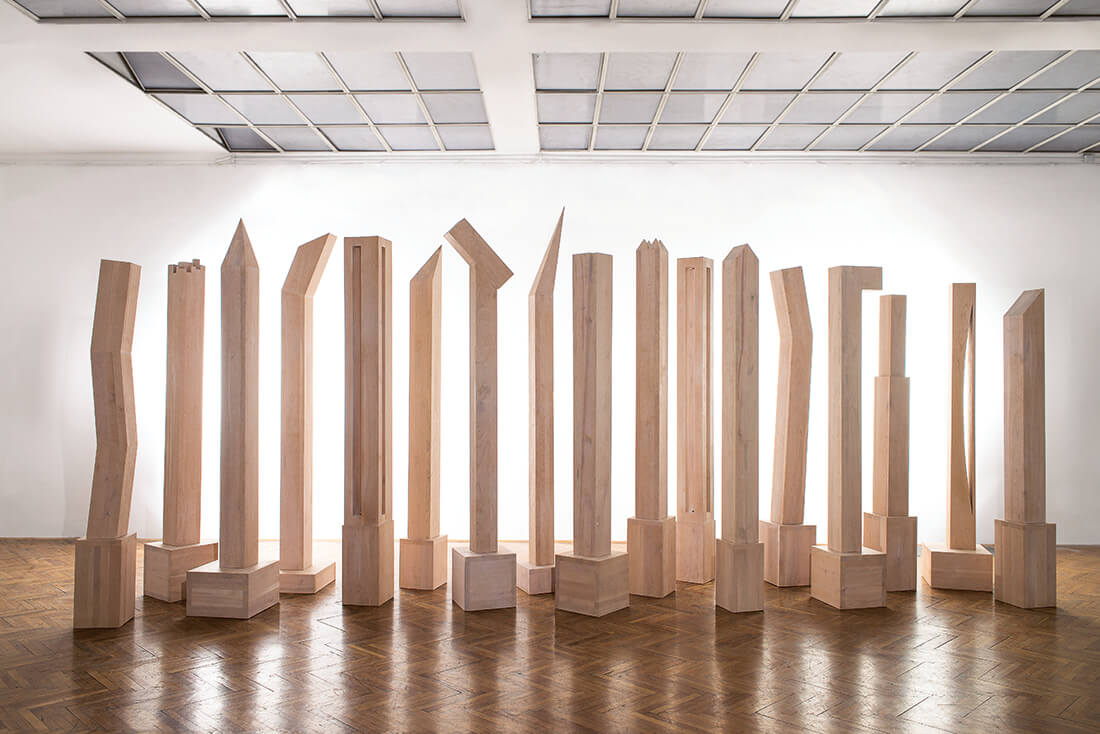
The foreword from the exhibition catalogue Art Salon "Vladimir Becić" Slavonski Brod, 2016
The Sculptor Peruško Bogdanić in a Synchronic Reading - Milan Bešlić
Peruško Bogdanić appeared on the contemporary Croatian art scene with his first works of sculpture in the mid-70s. Immediately after the closing of his studies at the Zagreb Academy of Fine Arts, the young sculptor introduced himself at a group exhibition with Kuzma Kovačić and Igor Rončević in the Gallery “Na Bankete” in the city of Hvar in 1976. Their artistic worth was already discernible in their identifiable creative outlines and this fact was addressed by
Vlado Bužančić in the catalogue essay. More than four decades ago, then, Peruško Bogdanić stepped forth into the visual art scene with works in which some of the characteristics of his sculpture were already able to be gathered, and particularly visible was their origins in the postmodernist heritage and the Mediterranean inspiration. On these fundamental premises he began to seek his own sculptural idiom in simplicity of form, stressing its visual component with a refined shaping of volume and a pure haptic surface with a perceptible poetic suggestiveness. By stressing in this way the temporal and aesthetic determinants, we would like to say that precisely within them we can locate the sculptor’s beginnings and the formative period of his creative work. Indeed, we list these determinants also because it is proper to draw attention to the fact that the temporal outline, the social setting, the cultural atmosphere and the multimedial context are not to be missed out in the consideration of the sculptor’s work, in both the first or beginning phase, and in the whole of it, in a retrospective collection and critical summation of the journey taken and the creative achievements.
And for this reason we have once again to refer to time and space, or in other words, to the social framework of dark political tones and, of course, the cultural context, for in them we read off the spiritual and intellectual mood of the sculptor’s first creative endeavours, which then were discerned as the points of origin of his work, recognisable in the very first productions.
Criticism has laid stress on these facts mostly so as to mark the context in which Bogdanić was formed as a sculptor, that is, it is said that he took on the values of the traditional inheritance and, very much so, postmodernist practice, underscoring the fact that it was on these very premises that he conceived his creative process and built up his sculptural individuality. In a consideration of Bogdanić’s work denoted in this way we should not neglect the fact that these
same social and cultural determinants also impacted other authors in that generation. And not only sculptors, but also painters, those who drew and made prints, artists who expressed themselves in other media as well. We are drawing attention to these facts also because they lead us to the conclusion that the
sculptor’s search for his own particular expression in this period can be observed in the context of the great postmodernist process particularly referring to the discourse of multimedia art and, in particular, to research into new materials, new media. And in this quest for new substances, the artists also found new possibilities for their own idiom, with which they changed the traditional
perception of the actual medium and, naturally, deepened it with new expressive possibilities, for it created new semantic values and opened up new creative pathways. And it was on this very principle that Peruško Bogdanić also conceived his sculptural procedure.
So in this, we might say, to emphasise, practically restorative transformation of visual discourse and the interrogation of the actual medium we can recognise the features of contemporary art that crucially influenced the contemporary classics of Croatian sculpture: the works of Šime Vulas, Ksenija Kantoci, Branko Ružić, Vojin Bakić, Dušan Džamonja, Marija Ujević, Kosta Angeli Radovani, Stevan Luketić, Ivan Kožarić, Josip Diminić… It was their sculptural experience, as visible in impressive works, that was stimulating to the younger generation of artists in the 80s. in whose first works that masterly line of contemporary Croatian sculpture is to be read, which put the scale of the new aesthetic criterion so high. It was clear that it was not only Peruško Bogdanić who aimed at these spiritual values and high aesthetic achievements, other artists of this generation too, showing with their first works that they were the legitimate descendants of the contemporary Croatian classics.
Zvonko Maković in his exhibition Other Sculpture of 1981 in the Nova Gallery in Zagreb drew attention to this generation of young sculptors and their characteristics, addressing some of them in terms of their sculptural origins and creative characteristics. Among these young artists who started to take on their particular shapes in the last decades of the 20th century, as we have endeavoured to indicate, in terms of close origins and aesthetic characteristics, the creative path of Peruško Bogdanić is marked with these visible traces of the heritage and, above all, in terms of his profoundly individual imprints.
Works of art that speak so clearly of their author tell of the cultural and artistic context of which it is worth speaking in order to see the more clearly that Bogdanić’s sculpture grew up on the aesthetic soil of new visual values. Permeated with this heritage, this sculpture was built up on the procedure of a cultivated metier of an undoubted performative skill, a consistent implementation of the visual concept in the very first works and also through the whole of his creative work. So, on aesthetic premises given shape in a sculptural procedure on postmodernist principles the characteristics of which can be seen for example in the works Cheops’ Dream, 1986, Corto Maltese, 1987 and Page, 2003.
The reviewers ranked these sculptural specificities of Bogdanić highly and placed them in the context on that line that was drawn by contemporary Croatian classics. Of course, we can read these values in the wider European context as well; for example, the contemporary English sculptor David Nash conceived sculptural forms in a procedure in which we can recognise points of
contact with the sculptures of Bogdanić.
Still, in spite of these tangents, it has to be stressed that on a creative principle that was quite similar, the two sculptors created very various sculptural works with undoubted features of their authors. What in particular elevated Bogdanic’s
sculptural work, and which criticism has several times brought out, is the cycle “Checkmate Lacquer” dated to 2009 and 2010. That is, its importance for the whole of Bogdanić’s work was stressed from various theoretical points of view and in various critical judgements. It was in particular underlined that the sculptor had assimilated the values of the traditional sculptural medium in a perspicuous synthesis of the postmodern interrogation of sculptural form,
his own segment being concatenated precisely in this inheritance.
It seems that we might claim that starting from the earliest works Bogdanić in his sculptural procedure tensioned the volume with the interior forces of the sculpture in the whole of the form, for this in the creative line turned out to be a constant, in both forms of smaller dimensions and in the larger, monumental pieces and, it has to be pointed out, in every substance-in stone, iron, bronze, wood and so on. It should be mentioned that he built up the actual procedure according to the principle of reduction of narrative complexity with a consistent elimination of descriptive chatter, reducing form to a visual sign of great symbolic expressivity. Hence the verticals in the cycle “Checkmate Lacquer” sublimate the experience of the actual sculptural procedure with a masterly skill, but not eliminating with its perfectionism of performance the flights of the imagination.
We might rather say that with the imagination he shapes, in inventive variations, an explicitly sculptural discourse of a powerful visual expression. The tall sharp-edged verticals, clean, smooth and light of surface, emanate metaphysical charges. The single colour verticals of an intensive brown gleam grow up from the spiritual centre of the form with a powerful heaven-directed uplift. The sculptural verticals round off a fullness of form with a firm static link of the base, cube or rectangle, from which climbs the axis in upright slender form strengthening the stalwart vertical in sculptural simplicity and visual clarity. In other words, heightening in the sculptural procedure an exceptional art of execution he sublimely expresses the visual thinking in a conceptually consistently formed work of sculpture. This consistence of the implementation of the visual concept and the invention of the formal procedure is to be read in a de range of variants: flat, curved, semicircular, cylindrical and pointed, round and slanting capitals in the rounded integral of the form of Doric, Ionic and Corinthian columns, shaping in nuanced propositions the ancient harmony of Bogdanić’s contemporary sculptural discourse. The variously formed flowering of the crenellations of vertical form multiplies its semantic value and with that Gothic soaring to the heights grows with spiritual power in the transcendental and celestial. With consistent reduction of the narrative, the sculptor in a smooth, clean brilliant surface of uniform intensity points up his own expression with suggestive symbolic connotations of vertical sculptures rhythmically harmonised with visual energy.
Here the form does not climb in the space with the vertical lift of Brancusi’s Endless Column or Vulas’s sturdy fastening of the vertical, but with the Bogdanić tensioning of the vertical into a concise sculptural expression by the pure growth into the heights of the tall and slender tree to which Rilke composed hymnic verses magnifying the actual growth of its vertical with the
divine suffusion of nature with the being of its being-with growth. Hence it can be stated that the sculpture shapes vertical forms into unique visual symbols that with ritual power of a totem generate a restorative power of transformation in inexhaustible variations and many-layered connotations. With the procedure of variation, Bogdanić perspicaciously multiplies the verticals, systematising the sculptural columns in an endless creative process.
In this sculptural work, the postmodernist principle of tradition as an open primer from which the author learns the letters of the heritage and shapes his own script with his own authorly characteristics, writing his own page of contemporary art. On Bogdanić’s page we read that his vertical forms by some strange energy of growth exalt the values of sculpture with their distinctive visual expressiveness.



